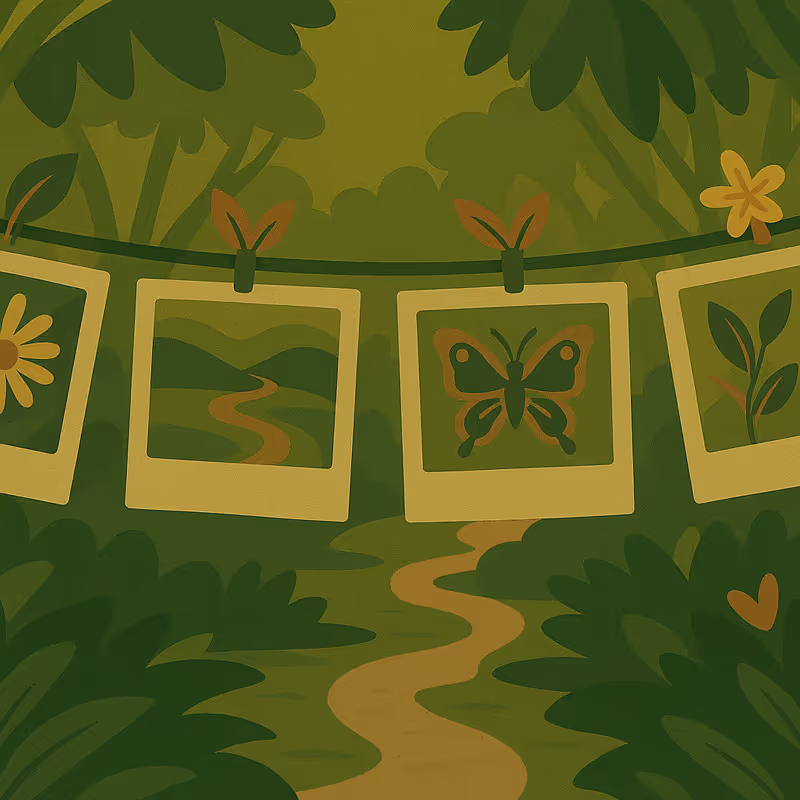What is a Biodiversity Photo Contest?
Photo contests offer a creative, participatory approach that engages people in documenting and reflecting on issues that matter to them, using visual storytelling as a means of expression, education, and advocacy. A biodiversity photo contest provides an opportunity to celebrate and raise awareness of the many ways biodiversity is experienced. In PLANET4B, an agrobiodiversity photo contest invited participants (from amateur photographers to experienced conservationists) to capture the richness of plant, animal, and microbial life in their gardens, workplaces, community spaces, and surrounding environments. The photo contest method is particularly suited to hobbyist and amateur photographers, making it an accessible and inclusive tool for documenting biodiversity.
In this module Borbála Lipka explains how the Biodiversity Photo Contest was used within PLANET4B, in this video she introduces the PLANET4B case study:
Key Features
Timeframe:
- The photo contest in the PLANET4B project lasted for 3 months during spring and summer, however this timeframe is very flexible.
- The method could be run over a week with a Learning Community, if there is already an engaged group of participants.
- Judges require additional time for selection, with possible exhibition opportunities to extend engagement.
Roles:
Organisers/ Facilitators:
- Manage the logistics, competition and advertising of the competition.
- Invite the judging panel, and set the criteria for judging.
- Decide clear criteria for the judging panel such as relevance, creativity, and/ or storytelling.
Contributors:
- Submit photographs that capture biodiversity and relationships with nature, in accordance with the competition brief.
- Contribute diverse perspectives and experiences, including (e.g.) those of residents, gardeners, students, conservationists.
- Contribute to inclusive storytelling, with the method supporting multilingual and non-verbal expression, making it accessible to children and individuals who do not speak the dominant language.
Judging Panel:
- Ideally select three judges with relevant expertise in biodiversity, photography, or community engagement. Ensure that there is a balance of perspectives and experiences on the panel.
- Have a People’s Choice category, where the vote is opened to the public to increase participation.
Materials Needed:
For Contributors:
- A camera or camera phone. If people would like access to a better quality camera, consider trying to partner with a local ‘library of things’, or a service where it is possible to rent a better quality camera. This can increase access, without the financial burden.
- Internet access to submit photos online.
For Organisers:
- Ethical consent forms and participatory guidelines. It is important to include clear guidance for participants on what is and is not appropriate to capture, as well as advice on where and when to engage with the method to ensure safety.
- A clear framework for submissions, including photo categories and submission formats.
- A photo submission system in which only the organisers can access the identity of each applicant, with entries anonymised for the judging panel.
- Contextually appropriate prizes, encouraging participation, reflecting the interests and needs of participants and the environmental setting (e.g., seed kits, gardening tools, photography vouchers).
Suitability and Applicability
Within PLANET4B, an agrobiodiversity photo contest was implemented (as part of the Hungarian case study) to encourage gardeners and small-scale farmers to share images that highlight different aspects of agricultural diversity. The contest included five categories, with winners receiving seed-related prizes.
Photo contests can be used to address crucial aspects of biodiversity conservation, including seed saving, conservation efforts, sustainable agriculture, and nature-society relationships more broadly. The contest encourages participants to take an active role in biodiversity monitoring while also providing engaging visual material for exhibitions, research, and advocacy. It:
- Encourages participation from diverse audiences in conservation efforts.
- Provides high-quality visual content for advocacy and awareness campaigns.
- Strengthens community engagement and fosters a learning network.
For example:
- Wildlife and Habitat Conservation: Showcasing endangered species, or habitat destruction could support a conservation drive.
- Positive Farming and Gardening Practices: Highlighting images of sustainable techniques.
- Advocacy for Environmental Protection: Documenting the impacts of pollution on biodiversity can support campaigns for stronger environmental policies.
- Community and Movement Building: Linking people who support similar practices and ideas, especially if people are geographically separated.
In this video Borbála Lipka explains how the Biodiversity Photo Contest offers a chance to showcase the beauty of agrobiodiversity:





















